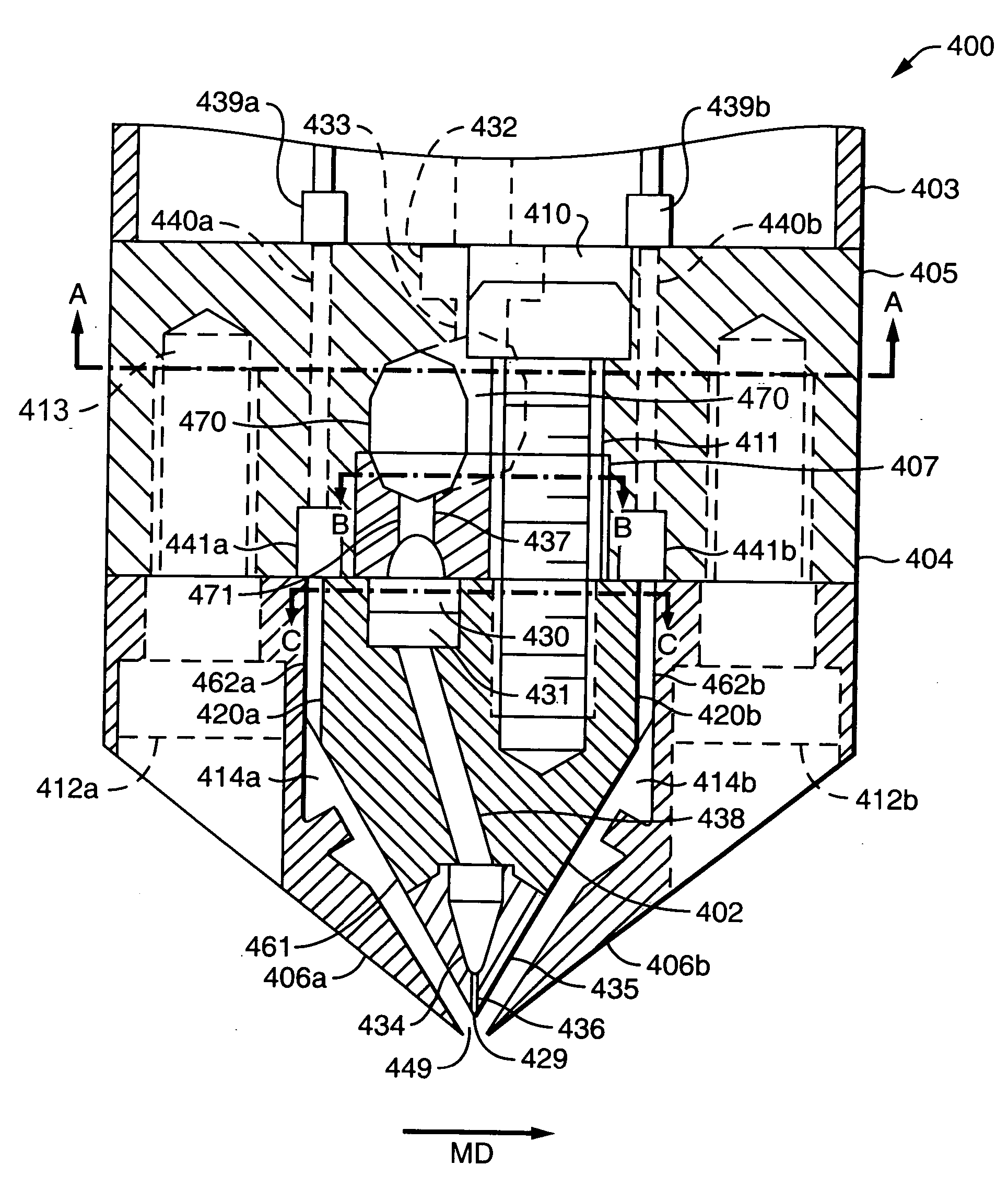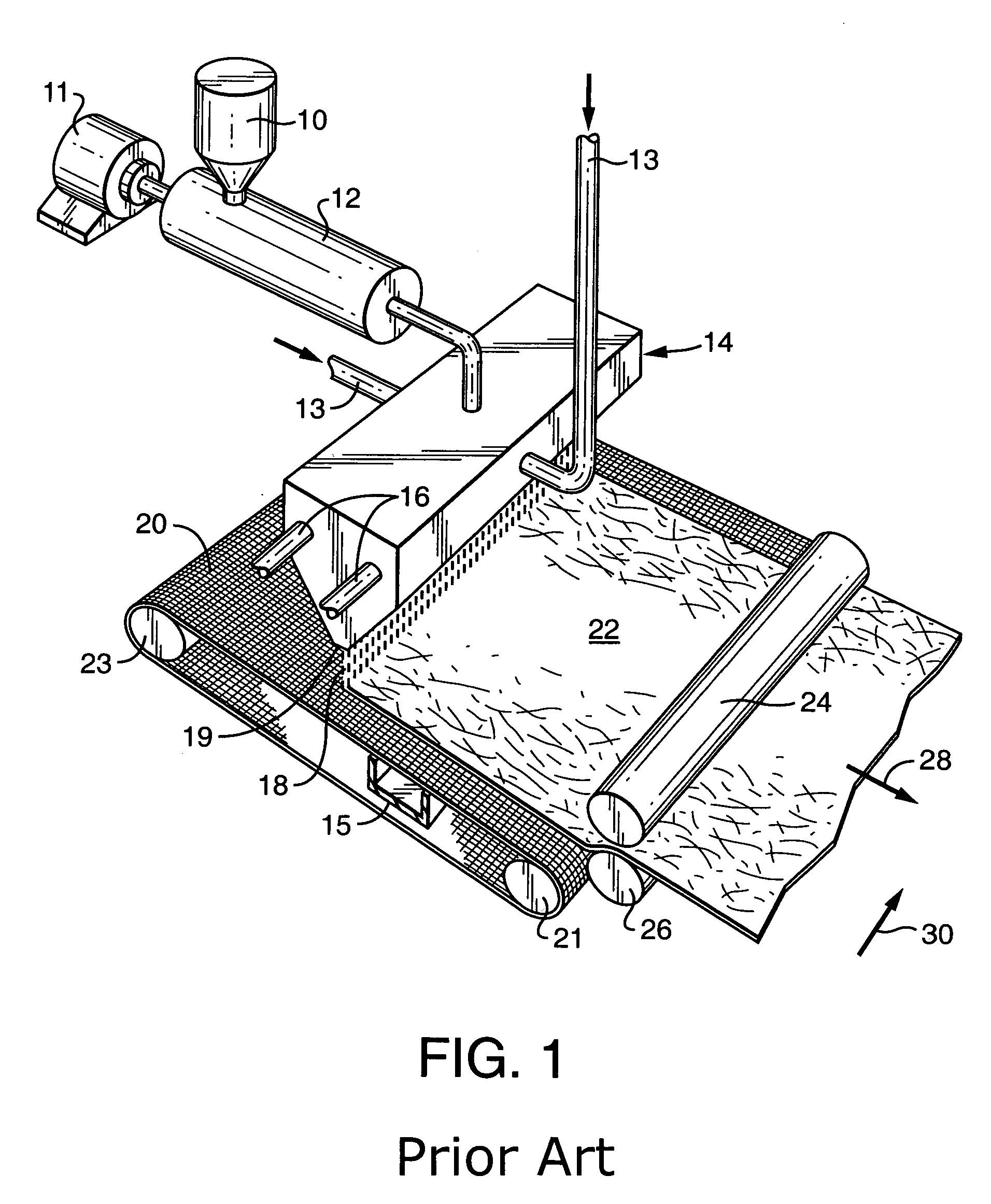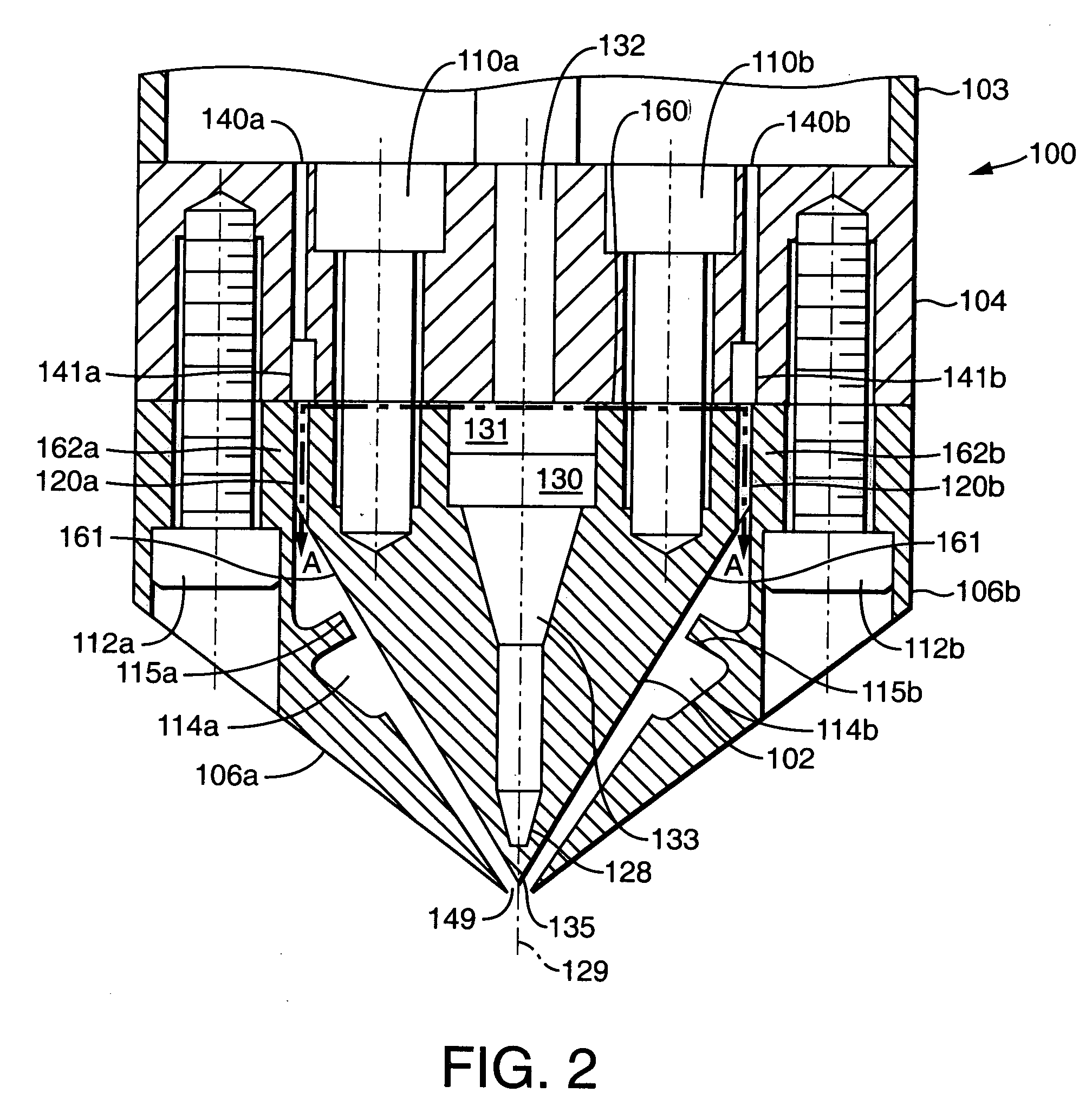Meltblown die having a reduced size
a technology of meltblown dies and dies, which is applied in the direction of dough shaping, manufacturing tools, and melt spinning methods, etc., can solve the problems of large space required per meltblown die, and little has been done to change the physics of the standard meltblown dies
- Summary
- Abstract
- Description
- Claims
- Application Information
AI Technical Summary
Benefits of technology
Problems solved by technology
Method used
Image
Examples
Embodiment Construction
[0039] To obtain a better understanding of the present invention, attention is directed to FIG. 1, which generally shows a conventional meltblowing process the prior art. Generally described, in a meltblowing process, a hopper 10 provides polymer to extruder 12 which is driven by motor 11 and heated to bring the polymer to the desired temperature and viscosity. The molten polymer is provided to die 14 which may also be heated by means of heater 16. The die is connected by conduits 13 to a source of attenuating fluid. At the exit 19 of die 14, fibers 18 are formed and collected on a forming belt 20 with the aid of an optional suction box 15 forming a web 22 which may be compacted or otherwise bonded by rolls 24 and 26. Belt 20 may be rotated by means of a driven roll which may be either 21 or 23, for example. In FIG. 1, the direction of the arrow 28 shows the direction in which the web is formed, which is referred to as the machine direction and arrow 30 show a direction perpendicula...
PUM
| Property | Measurement | Unit |
|---|---|---|
| Width | aaaaa | aaaaa |
| Width | aaaaa | aaaaa |
| Width | aaaaa | aaaaa |
Abstract
Description
Claims
Application Information
 Login to View More
Login to View More - R&D
- Intellectual Property
- Life Sciences
- Materials
- Tech Scout
- Unparalleled Data Quality
- Higher Quality Content
- 60% Fewer Hallucinations
Browse by: Latest US Patents, China's latest patents, Technical Efficacy Thesaurus, Application Domain, Technology Topic, Popular Technical Reports.
© 2025 PatSnap. All rights reserved.Legal|Privacy policy|Modern Slavery Act Transparency Statement|Sitemap|About US| Contact US: help@patsnap.com



